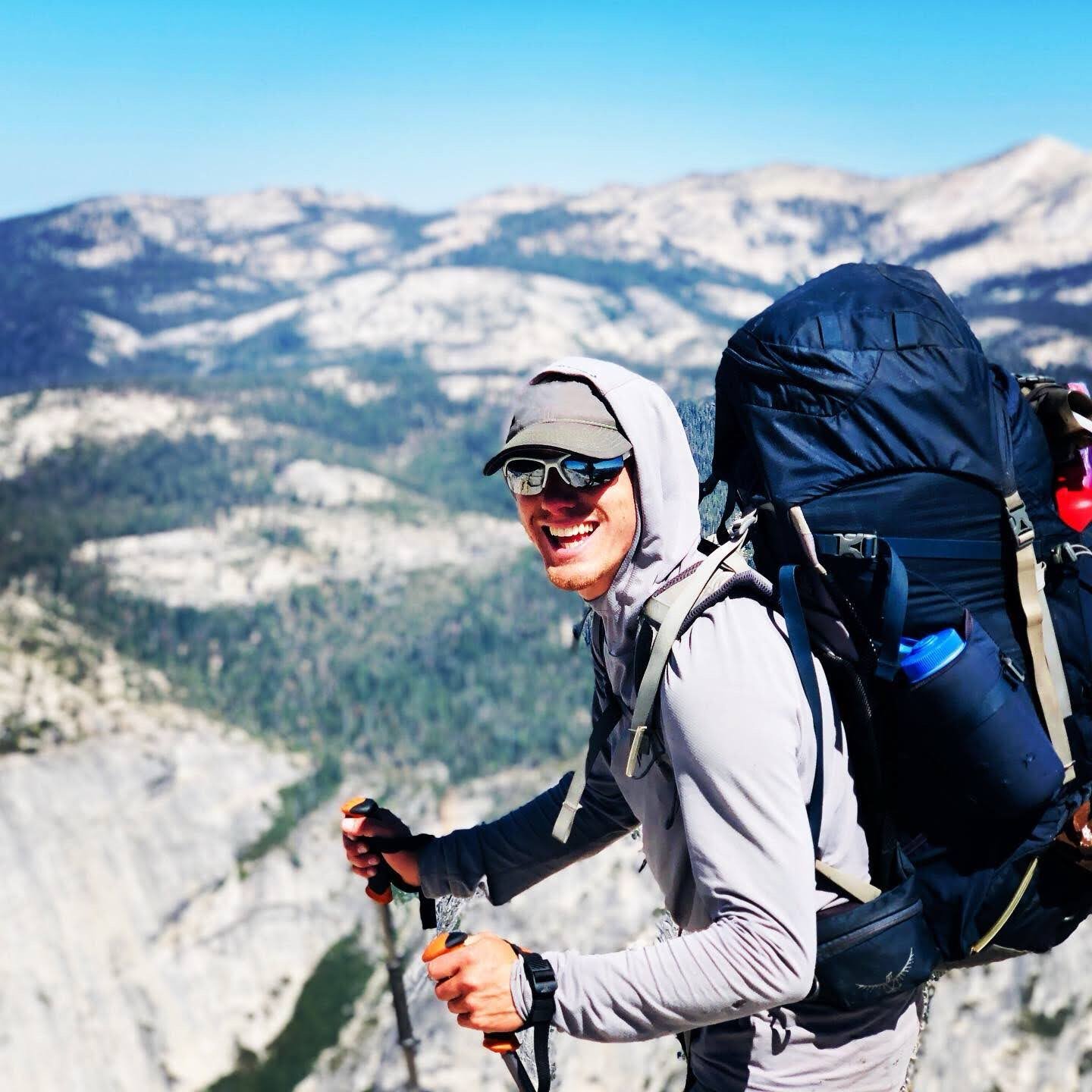How to Choose the Right Backpack for Yosemite & Beyond
Hey friends, James here with some helpful backpacking pack–selecting tips!
They say the hardest part of traveling is packing your bags—so let’s talk about the hardest part of wilderness travel: packing your bag for the backcountry. This post is your guide to picking a good pack and making the most out of it.
If you’d like a comprehensive list of what to pack, check out our Backpacking Packing List page .
Step 1: Understand the Basics — Size, Fit & Convenience
When it comes to backpacking, your pack choice comes down to three key things:
Size
Fit & adjustment
Convenience features
My preferred pack is the Osprey Aether 70, though I’ve also been impressed with how comfortable Gregory packs have become. I’m partial to Osprey’s hip belts for long days under load.
Remember—packs feel different when they’re heavy and worn for hours. Try it on, load it up if possible, and be critical about how it molds to your back. The more dialed the fit in the store, the better it’ll perform in the field. And don’t hesitate to ask your local REI staff to help you fine-tune the adjustments.
Remember—packs feel different when they’re heavy and worn for hours. Try it on, load it up if possible, and be critical about how it molds to your back. The more dialed the fit in the store, the better it’ll perform in the field. And don’t hesitate to ask your local REI staff to help you fine-tune the adjustments.
Step 2: Pack Size — How Much Room Do You Really Need?
Backpacks are sized in liters—usually shown as two numbers, like 65+10 or 50+5.
The first number is the main compartment.
The second is the “brain” (the top lid section).
Hip pockets and side “joey pouches” (those stretch sleeves on the back) often aren’t included in the stated capacity.
When in doubt, go a little bigger—but not too big. Extra space gives flexibility, but a larger pack can tempt you to overpack.
“My rule of thumb? The best place for heavy items is on your guide”
Think about your trip goals:
Want to be more comfortable on trail? Choose a smaller pack.
Want more comfort in camp? Bring a few luxuries and size up.
If your pack weighs more than 50 lbs, skip “anti-gravity” frames—they tend to bend under heavy loads.
Step 3: Fit & Adjustability — Comfort is Everything
Fit is how the pack’s structure matches your body; adjustability is how easily you can tweak it once you’re hiking.
Key adjustment zones include:
Shoulder straps
Hip belt & Rear hip adjusters
Load lifters & torso height
Many modern packs hide their torso adjustment systems with Velcro panels or sliding tracks. If a pack can’t adjust its height, be absolutely sure it fits before you buy.
Once you’re on the trail, a guide can help dial your pack even further—but only if the pack has the right range of adjustment.
Step 4: Convenience Features That Make a Big Difference
A good pack should make your day smoother. Look for features that solve your personal trail challenges:
Hip pockets for easy snack access.
Forward-facing zippers on the brain so you can open it while wearing the pack.
CamelBak sleeve if you struggle to drink enough water.
Camera mount or quick-stow pockets for easy photo access.
Umbrella-compatible side pocket if you’re heat-sensitive in desert environments.
Ask yourself what slows you down or frustrates you on trail—and find a pack that fixes it.
Step 5: Try Before You Buy
Even with research, nothing beats trying on a few packs in person. Load them with weight, walk around, adjust, and see what feels right. Your pack should feel like an extension of your body—stable, comfortable, and ready for miles of trail.
Ready to Test Your Pack on Trail?
If you’re looking for a guided Yosemite backpacking trip, we’d love to show you the ropes. Our trips include permits, meals, and professional guidance—you just bring your pack and a sense of adventure.
Wherever the wind takes you, pack smart ,Look good.
— James





